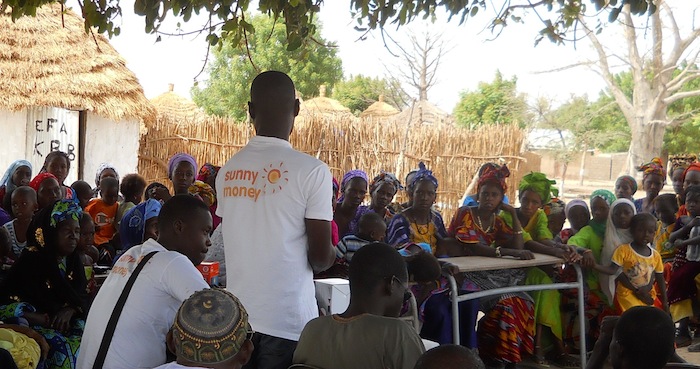Checking Out Solar at the ‘Light Library’: SunnyMoney designed a distribution model allowing customers to test products before buying
In early 2013, SolarAid, a leading international charity tackling climate change and poverty, decided to test out a brand-new model, thanks to funding from Lighting Africa, a joint IFC and World Bank initiative. Up until this point, SunnyMoney, SolarAid’s social enterprise and one of the largest sellers of solar lights in Africa, had focused on selling portable (or pico-) solar lights in rural areas to build a market for better access to safe, clean, affordable energy.
Over the years, SunnyMoney has been inundated with requests to use and test the lights to allow exposure and build awareness to help build trust and demand without undermining strategies to build a sustainable market. In response, SunnyMoney designed the Light Library, a distribution model that gives would-be customers that opportunity.
The Light Library model was tested in rural Senegal in partnership with the Senegalese Rural Electrification Agency and the Ministry of Education. A donated set of pico-solar lights was given to selected public schools in rural areas, enabling students to borrow the lights at a small fee to study after dark. This meant that whole families had a chance to use the solar lights and see how they may fit into their lifestyle. It also enabled families to begin saving money by reducing their spending on lighting alternatives like candles, batteries for torches or kerosene for lamps.
Nearly 5,000 solar lights were given to 58 selected schools participating in the project and an estimated 55,000 people gained direct exposure to solar lights. The project saw many positive impacts including increased community interaction with the school and increased enrollment as schools were seen as better resourced and providing better opportunities for child education.
One year on from the Light Library project, SunnyMoney delivered their traditional sales campaign in the selected schools, as well as a control group to find out if there was higher uptake. The results were pretty staggering.

(Representatives from SunnyMoney meet with parents, teachers and students at a product demonstration in Senegal.)
In the participating Light Library schools, 35 percent of the school population (2,138) bought a solar light. This constitutes a much higher uptake than SunnyMoney has seen across its other country programmes in eastern and southern Africa. The uptake was more than double the sales in the control schools. The control schools were based in a similar region in terms of geography, population and poverty, but had no prior interaction with SunnyMoney prior (and no Light Library). Uptake there was at 15 percent (966) – still very high. What’s more staggering is that this level of sales was achieved in just a few weeks in a small area of rural Senegal. The Light Library model not only appears to have increased uptake through increased exposure, but also seems to have reduced the perception of risk. In fact, in Light Library schools the customers included more risk-averse, lower-income families than in the control schools.
Now, SolarAid have released a guide to the model. The guide shares information on the design and delivery of the model, as well as SunnyMoney’s traditional sales model. It shares the results of an evaluation as well as the lessons learned, challenges faced and key issues addressed. The report also draws conclusions on the usefulness of the model in building a sustainable market for improved access to, and availability of, solar products, and offers guidance and recommendations for governments, private-sector, practitioners, policy-makers and donors considering using, implementing, promoting or funding the model. SolarAid and SunnyMoney are also making the tools and materials designed and developed for delivery of the Light Library model available for public use.
You can find the full guide here.
Kat Harrison is Director of Research and Impact at SolarAid.
- Tags
- distribution, research, solar
